Popular Mechanics' Steel-Framed 'House of the Future' Is For Sale
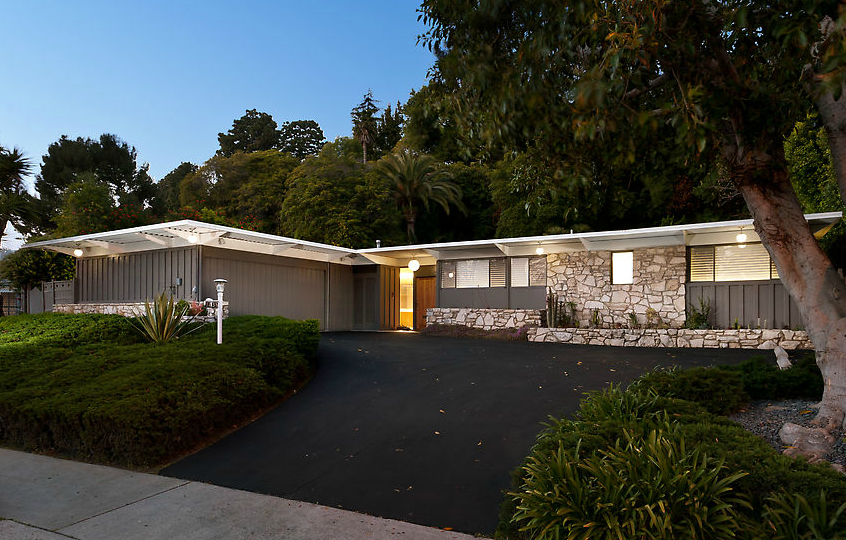 |
A house for sale in Brentwood, in the Los Angeles area, boasts an interesting pedigree: It was built by Popular Mechanics editor Thomas Stimson in 1955, using steel framing and inspired by the postwar Case Study houses. Billed as “the house of the future” in its day, the single-story, four-bedroom abode is now going for $1.8 million, its online listing leading with its place in history. So how much are you paying just for that pedigree?
A stop by Zillow showed the house, while pricey, is within the market rate for Brentwood. In fact it’s a few hundred thousand less, depending on how you count the bedrooms. Zillow puts the average price for a four-bedroom home in the 90049 zip code at $2.358 million, significantly more expensive than the Stimson house. But the original design for the house considered one of the four bedrooms a den. If it was listed as a three-bedroom, it would be a bit over the $1.67 million average.
Most of what makes the house interesting can’t be seen: Its steel frame, supported vertically by round posts and topped with a grid of beams, is hidden behind an unattractive drop ceiling, which still remains. The frame itself is not particularly pretty, as a photo of the construction from Popular Mechanics’1955 issue makes clear:
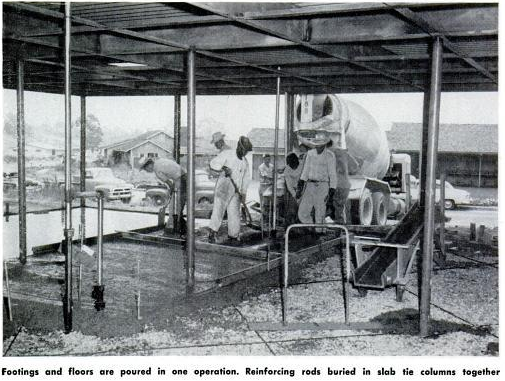
Stimson figured by now the place would be powered by a “solar battery” which would share roof space with the helipad he had planned. Sadly, neither development came to pass.
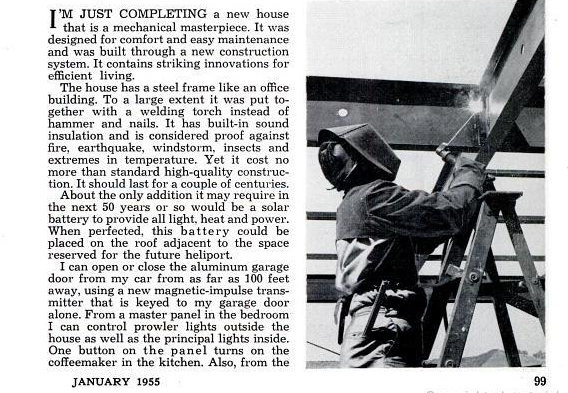
Other experimental, steel, “houses of tomorrow,” such as Eichler’s X-100, made a point of showing off their steel frames, bearing them starkly among glass walls and corrugated roofs. Our “Steel Ideal” roundup shows some of the most striking. By comparison, the Stimson house's steel framework is largely hidden, apart from those corrugated eaves and some exposed tubular posts.
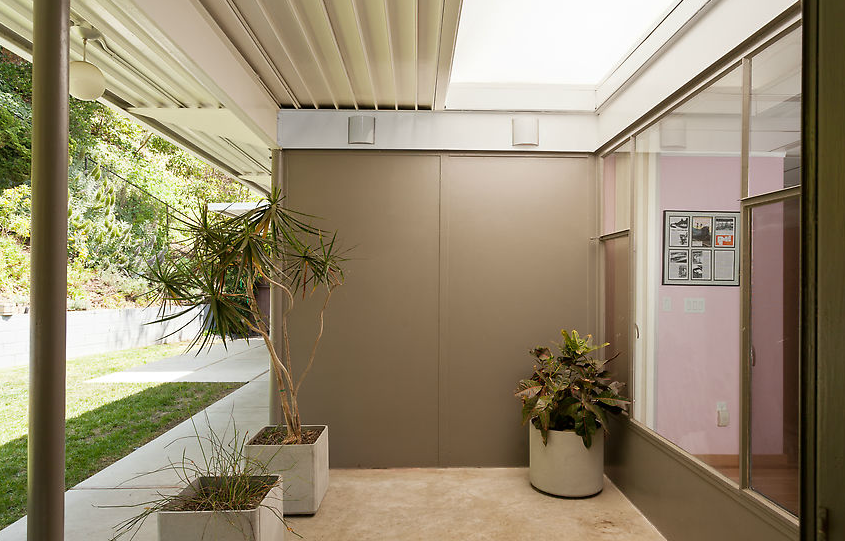
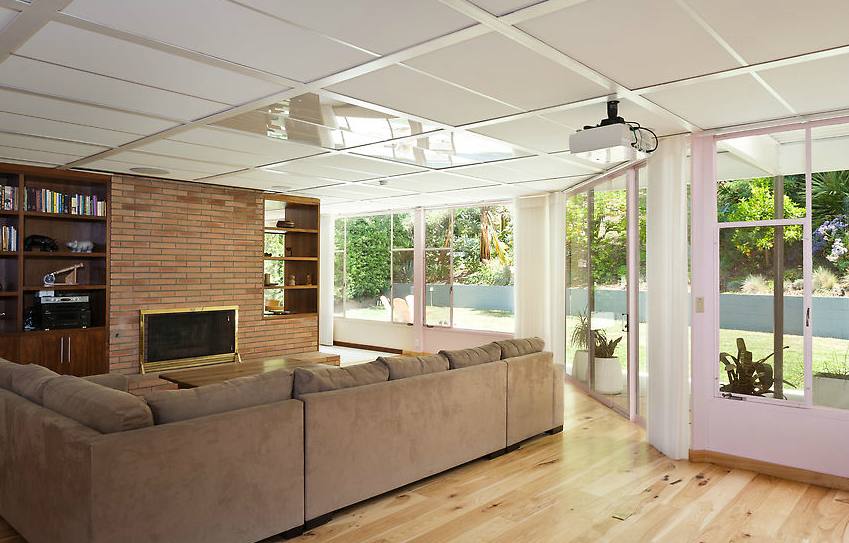
Some of Stimson’s assertions about the house have proved questionable in the 58 years since it was built. He claimed in his original article that it was “considered proof against fire, earthquake, windstorm, insects, and extremes in temperature.” Of course, it hasn't burned, nor crumbled, nor been eaten, but that doesn't mean it is impervious to those things.
The insect thing seems fair enough. Termites dislike steel. But as Gizmodo points out, there were “unanswered questions about [the steel frame's] structural integrity during earthquakes.” Surely it's a better material than, say unreinforced masonry, but like other houses of its era, Stimson's would have been built to different seisemic codes from today's.
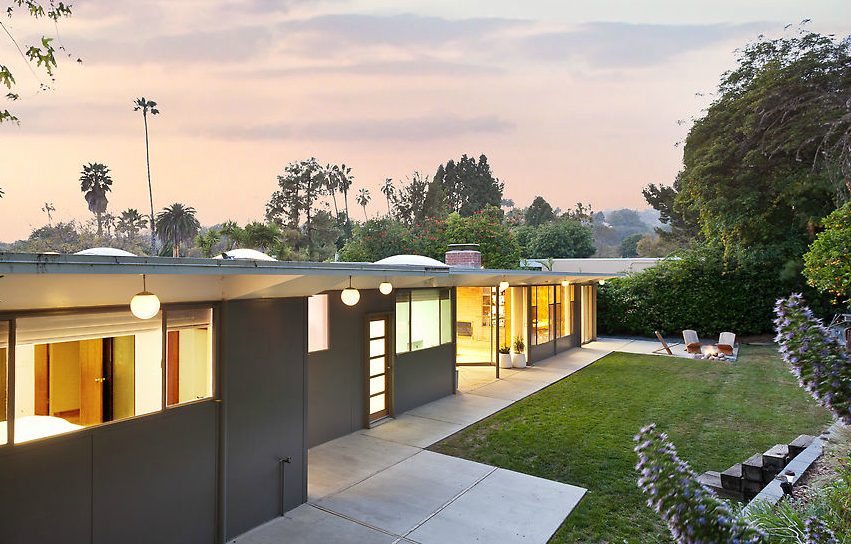
Stimson's "fireproof" claim is a stretch, especially since we now know that at least two steel-framed houses built by Eichler architects Jones and Emmons burned down. One, part of U.S. Gypsum’s “Research Village,” burned down in 1962 and another, which A. Quincy Jones built in Bel Air, burned down in 1961. As for the “extremes in temperature” claim, well, in coastal Los Angeles that’s sort of a moot point.
The bottom line is that while the story behind this home is a great one, the house is not a great collector’s item because it doesn’t look much out of the ordinary. And as it turns out, it’s not priced like one either.
*All current house photos used with permission from Crosby Doe Associates, architectureforsale, and photographer Cameron Carothers.
- ‹ previous
- 464 of 677
- next ›




